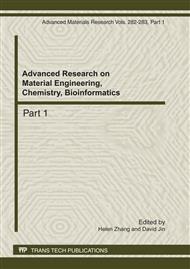p.299
p.303
p.307
p.312
p.317
p.322
p.326
p.330
p.334
Synthesis, Antioxidant and Anticancer Activities of Efficient Glutathione Peroxidase Mimic
Abstract:
Glutathione peroxidase (GPX) is a well-known selenoenzyme that can protect cells against oxidative damage. A novel dicyclodextrinyl ditelluride (2-TeCD) compound was devised as a functional mimic of the GPX. The antioxidant effect of 2-TeCD was evaluated by its ability to protect mitochondria from oxidative damage. 2-TeCD could also suppress the TNF-α induced inflammatory effect on HUVECs surface in a dose-dependent manner. Meanwhile, 2-TeCD exhibited anti-proliferative property both in vitro and in vivo. These results indicate that 2-TeCD may be useful for developing medical agents in many pathological conditions such as cataract, age-related diseases, atherosclerosis, cancer and so on.
Info:
Periodical:
Pages:
317-321
Citation:
Online since:
July 2011
Authors:
Price:
Сopyright:
© 2011 Trans Tech Publications Ltd. All Rights Reserved
Share:
Citation:


